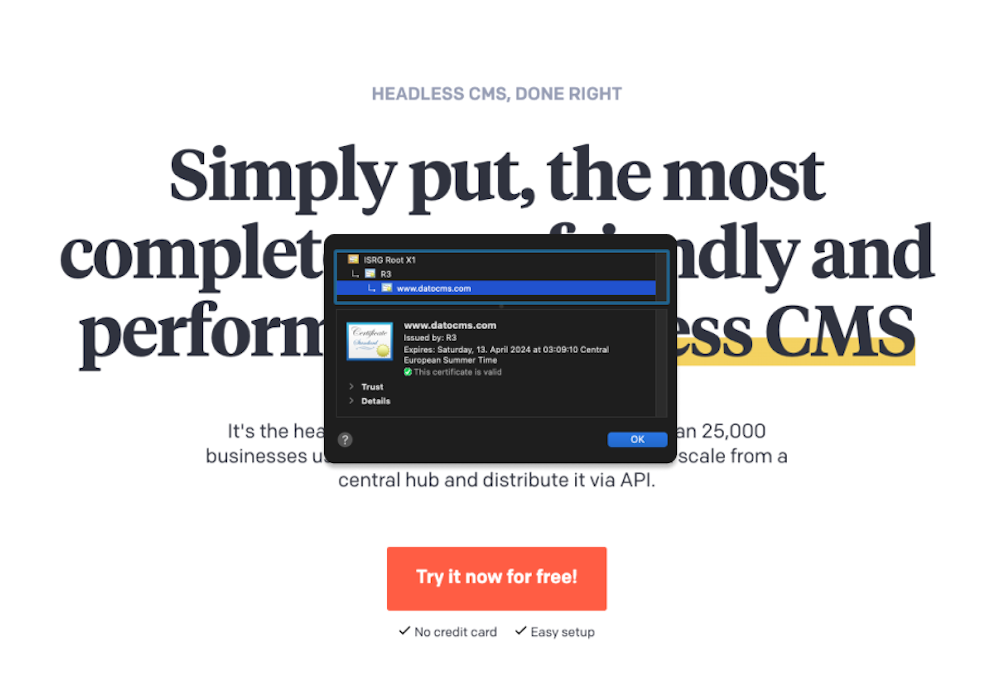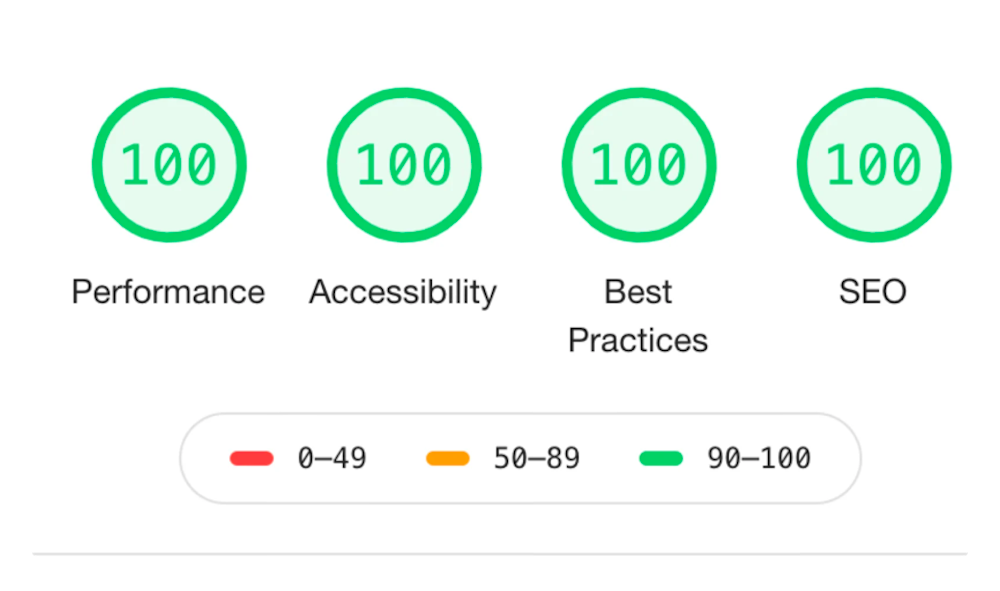TLDR
The foundation for succeeding with a Headless CMS and SEO is ensuring the technical implementation is done correctly - from getting the basics right by ensuring HTTPS everywhere, to correctly opting for a balanced approach to dynamic rendering - there's several considerations for setting up a Headless CMS.
Headless CMS and SEO can have several limitations, and isn't a WYSIWYG + Plugin combo as you might be used to with traditional CMS.
Original content aimed at people, proper keywords, interlinked content, and backlinks from reputable sources are still of prime importance for strong SEO, regardless of the CMS.
Editorial best practices are as important as technical ones.
This is such an incredibly interesting and “it depends” topic, that there’s no blanket answer for whether or not a Headless CMS is better for SEO for you – it all comes down to the technical implementation, and following best practices from the development and editorial side.
Technical Implementation of a Headless CMS for SEO
The technical implementation of a Headless Content Management System (CMS) for SEO poses unique challenges and opportunities. Unlike traditional CMSs, where content and presentation are intertwined, a headless CMS separates content management from content delivery, relying on APIs for the latter. This architecture impacts several technical aspects crucial for SEO. Let’s take a quick look at several of the factors and best practices that go into setting up your CMS for being SEO ready.
Use HTTPS

A bit of a no-brainer to start with, really. Securing your site with HTTPS is a must for SEO. HTTPS not only protects the integrity and confidentiality of your users' data but is also a ranking signal for search engines. When using a headless CMS, ensure that your entire content delivery infrastructure supports HTTPS, including secure API endpoints.
URL and slug structure
In a headless CMS, since the content delivery is separate, you have complete control over URL structures – a critical factor in SEO. It’s essential to create clean, readable URLs that include target keywords and are logically organized. Implementing SEO-friendly URL structures requires careful planning in the content delivery layer, ensuring that URLs follow a consistent, navigable, and intuitive pattern.
Semantic HTML
Using semantic HTML tags is essential for SEO as it helps search engines understand the structure and content of your pages. In a headless CMS, you have the freedom to structure your content as you see fit. However, on the repo itself, use semantic elements like <header>, <footer>, <article>, and <section> to define different parts of your content. Proper use of <h1> through <h6> tags for headings and subheadings also helps in structuring content hierarchically, making it more accessible and understandable to search engines.
Interestingly, as of 2024, it's a hot topic again as to whether or not the HTML structure actually matters. Here's an insight into Google "confirming" that HTML Structure Doesn't Matter Much For Ranking.
Schema Markup

Google recommends using JSON-LD for structured data - this is vital for enhancing search engine understanding of the page content. In a headless setup, you need to integrate schema markup within your repo. This involves tagging your content with relevant schema.org types, which can be managed through the CMS and delivered via APIs to the front end, where it's rendered with the correct schema. Check out the recommendations from Google's side, to see whether your content or content types have any applicable best practices. The example shown is for rich rendering of a recipe.
Site Speed Optimization

We all love a row of 100s on the Lighthouse! Headless CMS architectures can significantly enhance site speed when implemented correctly – a key Google ranking factor. The lightweight nature of headless CMS, devoid of front-end bloat, means faster content delivery. Leveraging technologies like CDN (Content Delivery Networks) for asset delivery, optimizing images and videos, and ensuring efficient API calls all contribute to improved load times.
CDNs
Speaking of performance and CDNs, use one! Using a CDN can drastically improve site speed and user experience. A CDN stores a cached version of your content in multiple locations to reduce latency when accessing your site. In a headless CMS setup, static assets like images, CSS, and JavaScript files should be served through a CDN.
Mobile Responsiveness
Given the mobile-first indexing approach of search engines, your content must cater to mobile users effectively. The front-end technology stack needs to be chosen and optimized with a mobile-first approach. Responsive design principles should be applied to ensure content renders well on all devices, which can be managed through separate APIs for different device types. While the CMS itself has no impact on your mobile friendliness, the API performance for content and assets can help a lot here when it comes to querying content on your side.
Dynamic Rendering
For content-heavy websites, dynamic rendering can be a solution to SEO challenges. It involves serving a version of the content that’s easily crawlable for search engines. Implementing dynamic rendering in a headless CMS context involves setting up server-side rendering or using pre-rendering services for complex JavaScript applications.
Server-side rendering
For JavaScript-heavy sites, server-side rendering is vital for SEO. SSR renders the JavaScript on the server, turning it into static HTML which is then sent to the browser. This process ensures that search engine crawlers can index your content effectively, as they sometimes struggle with heavy client-side JavaScript.
Static Site Generation
Related to SSR and load times, depending on your use-case, many aspects if not all can be leveraging SSG for your web-first approach. Generating static pages from a headless CMS can improve site performance and SEO. Static sites load faster as they are simple HTML files without server-side processing. Modern static site generators like Jekyll, Hugo, and 11ty can pull content from a headless CMS and pre-render it into static files, combining the benefits of a CMS with the performance of static websites.
SEO-Friendly Content Delivery
In a headless CMS, content is delivered via APIs, and how this content is rendered on the client side can impact SEO. Ensuring that the content, especially textual content, is fully crawlable and not reliant on JavaScript for rendering is crucial. The big G doesn’t like it when a lot of text is hiding behind JS rendering, so ensure that your entire content is robot friendly as much as human friendly. Implementing server-side rendering or hybrid rendering approaches can solve these issues.
Image SEO

Last but not least, it’s always good to remember that optimizing images is crucial for SEO - as much as we loathe going in to update alt_texts and the like. This includes compressing images, using appropriate file formats, and providing alt tags for accessibility. In a headless CMS, you can handle image optimization through automated tools and ensure that the API delivers images in optimized formats and sizes for different devices.
Benefits of a Headless CMS on SEO
Once the technical implementation is in place, editors normally have a breeze managing their content within a well-structured CMS environment. Ongoing content production and optimization have led to several emerging benefits of adopting a Headless approach – particularly with UX and editorial flexibility at the center of SEO gains.
Enhanced UX
A key benefit of a Headless CMS is the ability to deliver a superior user experience. With its front-end freedom, designers and developers can create fast, responsive, and visually appealing websites that delight. A better UX leads to lower bounce rates and higher time on site, metrics that search engines consider when ranking sites (bounce rates are arguable for 2024, but we all love a good time-on-site metric!). By prioritizing user satisfaction, a Headless CMS indirectly boosts SEO through improved user engagement.
Flexibility in Content Delivery
Headless CMS allows for content to be delivered and optimized for any platform. This multi-platform compatibility ensures that content is accessible and optimized for users across all devices, a crucial factor in mobile-first indexing strategies of modern search engines.
Streamlined Content Management
The backend flexibility of a Headless CMS empowers content creators with better workflows and easier content management processes. This advantage allows for quicker content updates, more efficient processes, and the agility to respond to trending topics or content opportunities. Timely and relevant content is key to keeping a website fresh and engaging, which is favored by search engines.
Improved Site Speed and Performance
The decoupled nature of a Headless CMS often results in faster website speeds, as the content delivery is not bogged down by the weight of the front-end presentation layer. Faster site speeds lead to better user experiences and are a direct ranking factor for search engines.
Technical Opinions
Headless CMSs indirectly force the implementation of various technical SEO best practices such as structured data, semantic HTML, and efficient content delivery via APIs, since developers have to implement best practices from the get-go. These technical underpinnings are essential for improved crawlability and indexability by search engines. The ease of integrating these features means that websites can maintain a technical edge.
By enhancing user experience, offering flexible content delivery, streamlining content management, and facilitating technical SEO best practices, a Headless CMS can bring immense gains to the overall SEO for a team provided that the implementation and best practices are followed.
Challenges when using a Headless CMS for SEO
It’s also worth noting that going Headless isn’t a magic bullet for great SEO. There’s many challenges, and at times, given the team/use-case, it may even not be recommended to go Headless! Let’s take a look at some common challenges we’ve seen pop up.
You need development resources
This can’t be underestimated enough. Whether working with an in-house team or an agency, going headless requires sufficient technical expertise. In a headless environment, even simple SEO tasks may require developer intervention. Unlike traditional CMS where marketers can directly make changes, headless systems might necessitate coding for updates like meta tags, structured data, or even URL changes. This dependency can slow down the ability to respond quickly to SEO needs or market changes.
Complexity of Implementation
Shifting to a headless architecture often requires a steep learning curve, especially for teams accustomed to traditional CMS platforms. This complexity extends to setting up SEO-friendly features which, in a headless setup, might require custom development. Ensuring that all SEO best practices are implemented effectively can be more resource-intensive compared to a conventional CMS considering your situation.
JavaScript Rendering Issues
Websites built on JavaScript frameworks can face challenges with crawlers. If not properly managed through techniques like server-side rendering or dynamic rendering, JavaScript-heavy sites can suffer from delayed or incomplete indexing.
Ensuring Consistency
One of the advantages of a headless CMS is also its challenge. Ensuring that content is consistently optimized across all platforms requires careful planning and execution. Missteps in content consistency and optimization can lead to a fragmented user experience.
Lack of Built-in SEO Tools
Headless CMS don’t have a one-click solution using plugins like Yoast and AllInOne SEO simply because they don’t “know” your website or end platform. All this needs to be configured. Traditional CMSs often come with built-in SEO tools and plugins that simplify optimization. In a headless CMS, these tools may not be readily available, or may require some custom work to connect your website analytics to your CMS.
In a headless CMS, adapting to new SEO trends might require more than just content updates; it may involve changes to the API, front-end, or even the infrastructure, necessitating ongoing investment in development resources. It’s worth keeping all these in mind when the time comes to choose a Headless CMS.